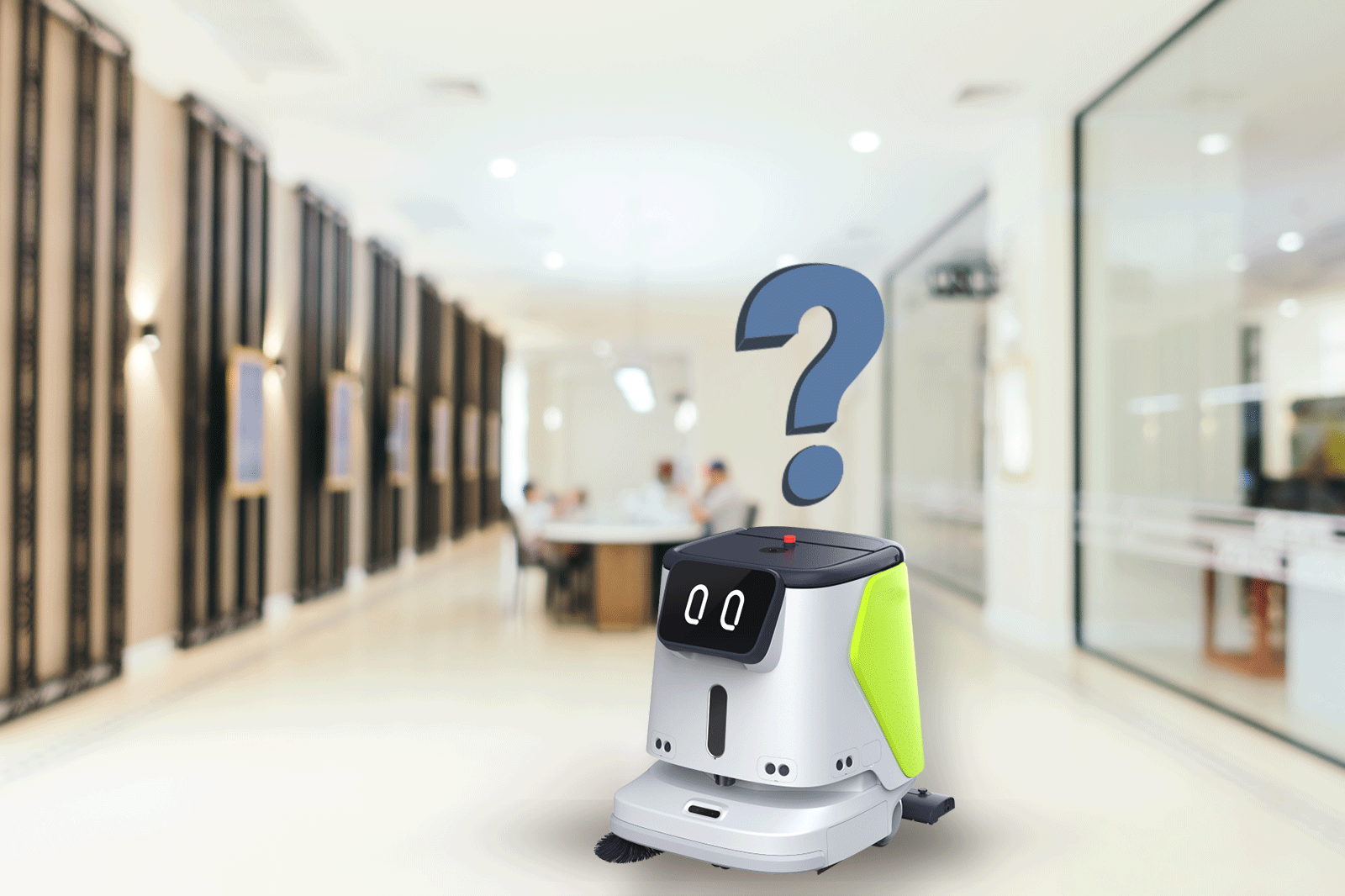Blog
How They Do It
Back to Blog(s)
April 3 2025
April 3 2025
The Science Behind Autonomous Floor Cleaning Robots

Floor cleaning robots are becoming a game changer for facilities, from warehouses and retail stores to hospitals and stadiums. But have you ever wondered how these autonomous machines manage to clean efficiently without missing a spot—or crashing into walls and furniture? It’s not magic; it’s technology. Let’s break down the science behind how floor cleaning robots navigate complex spaces, do the dirty work, and maximize efficiency for facilities that need to stay clean.
Navigation: How Do Floor Cleaning Robots Know Where to Go?
Unlike basic robotic vacuums for homes, commercial floor cleaning robots must handle complex environments with high foot traffic, obstacles, and different flooring types. To do this, they rely on several key navigation technologies:
LiDAR (Light Detection and Ranging)
LiDAR uses laser beams to map the environment in real time. The robot emits pulses of light, measures how long they take to bounce back, and creates a 2D or 3D model of its surroundings. This helps the robot navigate accurately, even in dimly lit or cluttered spaces.
Cameras and RGBD Sensors
All autonomous floor cleaning robots incorporate cameras and RGBD (Red, Green, Blue, Depth) sensors as part of their obstacle avoidance safety technology. These devices enable the robot to detect objects and people in the near environment, allowing it to adjust its path dynamically. For example, if a person suddenly steps into its way, the robot can quickly stop or reroute to avoid collisions.
vSLAM (Visual Simultaneous Localization and Mapping)
vSLAM is a crucial algorithm that enables robots to map their environment while keeping track of their own location within it. vSLAM uses visual data from cameras to orient themselves in space and update their maps. vSLAM helps floor cleaning robots to operate in large, changing environments without getting lost.
Infrared and Ultrasonic Sensors
Infrared and ultrasonic sensors help detect obstacles at close range, preventing the robot from bumping into furniture, walls, or unexpected objects like carts and chairs. Ultrasonic sensors are also good for detecting objects the other sensors may miss, such as glass walls, and skinny reflective posts such as chair and table legs. These sensors work alongside LiDAR and cameras to create a multi-layered navigation system.
The Nitty Gritty: How Do Floor Cleaning Robots Actually Clean?
Cleaning isn’t just about moving around—it’s about effectively removing dirt, debris and liquid from the floors in an efficient manner, and ensuring that floors are left as dry as possible to prevent slips and falls.
Rotating Brushes and Scrubbers
Most commercial floor cleaning robots are equipped with rotating cylindrical or disc brushes that operate at speeds ranging from 100 to 1,000 RPM. These brushes effectively dislodge dirt and debris from different floor surfaces, whether it’s tile, concrete, or hardwood.
Squeegees and Vacuum Systems
After scrubbing, a built-in squeegee and vacuum system work together to remove dirty water and debris, leaving floors dry and spotless. This is especially useful for environments where slip hazards must be minimized, such as hospitals and retail spaces.
Water and Detergent Distribution
The amount of water used during a cleaning run can be adjusted based on a facility’s unique flooring/cleaning needs. Considerations are things such as typical traffic and soil level and seasonal variations (wet floors in the winter or dusty floors in the summer). Sensors inside cleaning robots also allow for ideal distribution of cleaning chemicals within the clean water tank, ensuring that only the appropriate amount of detergent is used. Sensors also trigger the robot to return to its workstation to replenish clean water, empty the dirty tank, or charge.
Edge and Corner Cleaning
To ensure a thorough clean, many floor cleaning robots are designed with side brushes or specialized edge-cleaning functions that sweep dirt from corners and baseboards into the robot’s main cleaning path.
How Do Robots Optimize Facility Cleaning?
Efficiency
Floor cleaning robots are designed to optimize efficiency while lessening burdens on human workers. Equipped with the sophisticated navigation and autonomous cleaning power discussed above, these useful machines navigate spaces with precision, ensuring thorough cleaning without missing a spot. Robots like the CC1, CC3 and CC5 can clean up to 8,000, 15,000 and a whopping 40,000 square feet per hour, respectively. And unlike manual cleaning or walk-behind machines, which rely on human time, effort and attention to detail, robots follow pre-programmed routes, systematically covering designated areas in record speed. This increased efficiency translates to significant time and labor savings.
Consistency
Autonomous floor cleaning robots deliver consistent results with every cleaning cycle and can be deployed as frequently as needed. Whether it's a sprawling warehouse, cavernous convention center or a bustling hospital corridor, floor cleaning robots follow predetermined cleaning protocols, ensuring uniformity and adherence to SOPs. This consistency enhances the overall appearance and safety of the facility and gives busy staff members one less thing to worry about.
Connectivity
Data is everywhere in today’s world, and facilities of all sizes use it to optimize operations and allocate resources. But because commercial cleaning is still very analog, cleaning data is still hard to come by. Autonomous floor cleaning robots are changing the game. Using advanced sensors and IoT connectivity, they can record how long they run, precise times of operation, exact square footage and locations cleaned, water and chemical usage, and more. This type of hard data allows for more insightful decision making while also providing hard proof of completed cleaning tasks.
In addition, new comprehensive facility management software integrations like Pringle NOC and Pringle Pristine are purpose-built for the tracking and management of robotic assets, IoT sensors, and janitorial tasks.
Now You Know!
Robotic cleaning technology isn’t magic, and it shouldn’t be intimidating. In fact, it’s one of the most useful tools to hit the facilities management sector in recent years. If you’d like to learn more about how our autonomous robots work, and what they can do for your facility, get in touch with our experts!
Leave a comment below...